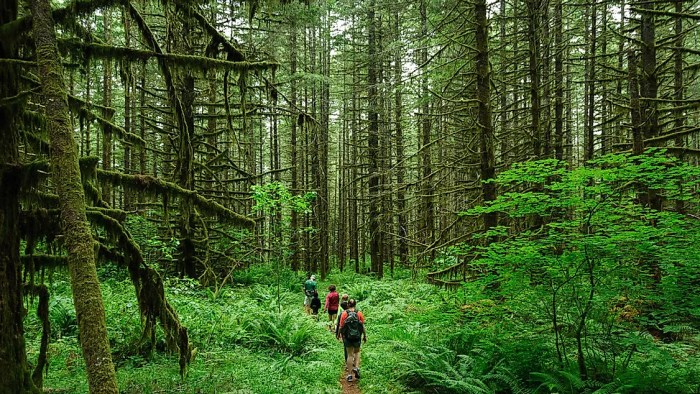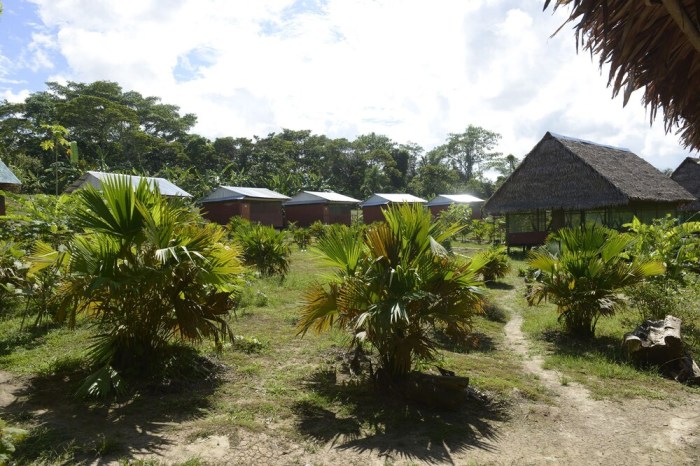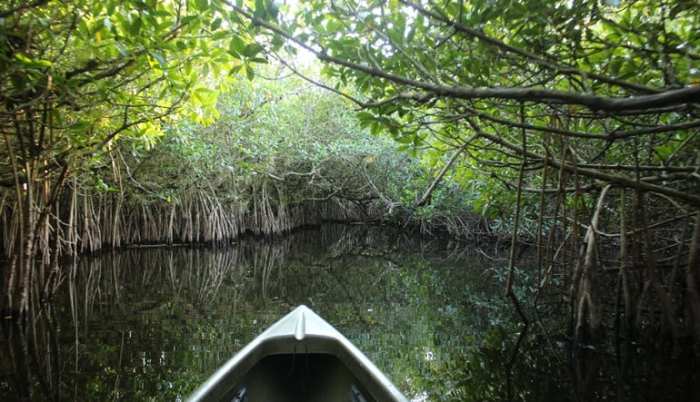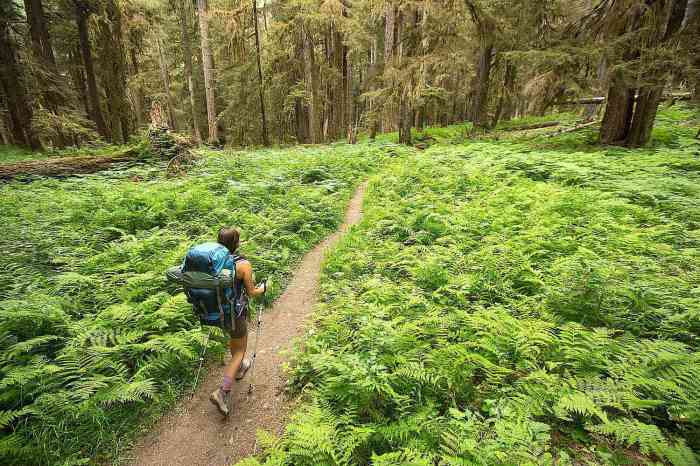Wild Buggy Eco Adventure Unveiled
Wild buggy eco adventure immerses you in a sustainable journey, exploring eco-friendly buggy tours across diverse landscapes. This detailed exploration encompasses the core principles of eco-tourism, highlighting responsible practices and destinations. From desert dunes to coastal trails, the adventure is tailored to minimize environmental impact, emphasizing responsible wildlife viewing and community engagement.
We’ll delve into the specifics of eco-buggy design, sustainable practices, and responsible destination choices. This includes evaluating the environmental footprint of different buggy types and comparing various destinations. Furthermore, we’ll uncover the crucial role of safety regulations, marketing strategies, and visual representation in promoting this eco-conscious adventure.
Defining the Eco Adventure

An eco-buggy adventure prioritizes minimizing environmental impact while maximizing the visitor’s experience. This approach goes beyond simply being ‘green’; it integrates sustainability into every aspect of the tour, from vehicle choice to waste management and local community engagement. It recognizes that tourism can be a powerful force for conservation and economic development if conducted responsibly.
This involves careful consideration of the ecological footprint of the activity, the well-being of local communities, and the preservation of natural resources. By adopting eco-friendly practices, buggy tours can contribute positively to the environment and support local economies.
Core Principles of Eco-Friendly Buggy Adventures
Eco-friendly buggy adventures are built on several core principles, including minimizing emissions, respecting wildlife, and supporting local communities. These principles are integral to ensuring a positive impact on the environment and local populations.
- Minimizing Environmental Impact: Vehicles are chosen for fuel efficiency and low emissions. This might involve electric or hybrid buggies, or optimizing routes to avoid sensitive habitats. Using recycled or locally sourced materials for tour infrastructure is another key aspect.
- Respecting Wildlife: Tours are designed to minimize disturbance to wildlife. Specific routes and timings are planned to avoid critical breeding or feeding periods. Educating tourists about responsible wildlife viewing practices is crucial.
- Supporting Local Communities: Tours often partner with local businesses and organizations, providing economic opportunities and respecting local customs. This might include employing local guides, purchasing supplies from local vendors, or contributing to community projects.
Sustainable Practices in Eco-Tourism
Sustainable practices in eco-tourism are crucial for maintaining the integrity of natural environments and supporting local communities.
- Waste Management: Implementing strict waste management protocols is essential. This includes reducing waste generation, properly disposing of all trash, and promoting recycling initiatives. Tours could also collect and recycle materials.
- Water Conservation: Using water-efficient equipment and techniques for cleaning vehicles and other tour operations is vital. Water usage should be minimized throughout the entire tour. Tours could also implement water-saving practices in accommodations or dining.
- Energy Efficiency: Optimizing energy use is essential for reducing the carbon footprint. This could include using energy-efficient equipment, employing renewable energy sources where possible, and promoting sustainable energy practices among local communities.
Types of Eco-Buggy Tours
Different terrains and environments necessitate tailored eco-buggy tours.
- Desert Eco-Buggy Tours: These tours often focus on exploring the unique landscapes and wildlife of desert environments. Tours would incorporate sustainable practices like minimizing dust generation, using fuel-efficient vehicles, and avoiding sensitive areas.
- Jungle Eco-Buggy Tours: Jungle tours might focus on navigating dense vegetation and spotting unique flora and fauna. These tours could use quiet vehicles to minimize disturbance to wildlife and follow well-established trails.
- Coastal Eco-Buggy Tours: These tours would prioritize exploring coastal ecosystems, such as mangroves and beaches. Tours could partner with local organizations to help preserve these habitats.
Environmental Impact of Traditional Buggy Tours
Traditional buggy tours often have a significant environmental impact due to emissions, waste generation, and habitat disturbance. These impacts can be mitigated with sustainable alternatives.
| Aspect | Traditional Buggy Tours | Eco-Friendly Alternatives |
|---|---|---|
| Emissions | High emissions from gasoline-powered vehicles | Low-emission or electric vehicles |
| Waste Generation | Significant waste generation from disposable items | Waste reduction strategies and recycling |
| Wildlife Disturbance | Potential for habitat disturbance and noise pollution | Minimizing disturbance to wildlife and following specific routes |
Evaluating the Eco-Friendliness of a Buggy Adventure Tour
A framework for evaluating eco-friendliness should consider several factors.
- Vehicle Type: Prioritize electric, hybrid, or other low-emission vehicles.
- Waste Management Plan: Assess the tour’s commitment to waste reduction and recycling.
- Wildlife Conservation Practices: Ensure the tour respects wildlife and avoids sensitive areas.
- Community Engagement: Evaluate the tour’s partnerships with local communities and their commitment to economic development.
Destination Considerations
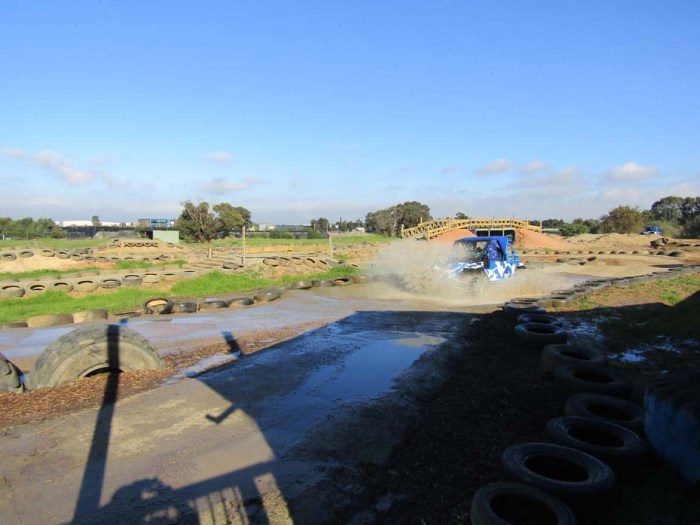
Source: com.au
Choosing an environmentally responsible destination is paramount for a truly wild buggy eco-adventure. It’s not just about the thrill of the ride; it’s about respecting the natural environment and contributing to its preservation. A well-considered destination selection reflects a commitment to sustainability and ensures the adventure is both enjoyable and responsible.
Selecting destinations for buggy tours necessitates a thorough assessment of environmental impact. Prioritizing locations with robust conservation efforts and sustainable tourism practices is crucial for minimizing the ecological footprint of the tour. This involves considering the delicate balance between adventure and environmental protection.
Factors for Choosing an Eco-Friendly Location
Careful consideration of several factors is essential when selecting an eco-friendly location for a buggy tour. These factors ensure the tour aligns with sustainable tourism principles and minimizes environmental harm.
-
- Presence of protected areas and wildlife sanctuaries:
Destinations with established protected areas and wildlife sanctuaries often prioritize conservation and sustainable tourism practices. The presence of such areas indicates a commitment to biodiversity protection and often translates into lower environmental impact.
-
- Local community engagement and support:
Locations that actively engage local communities in tourism ventures tend to foster sustainable practices. Community involvement often leads to better preservation of local culture and resources.
-
- Minimizing impact on sensitive ecosystems:
The destination’s sensitivity to ecological disruption must be considered. Areas with fragile ecosystems, rare species, or unique geological formations require careful consideration to avoid adverse impacts.
-
- Sustainable transportation options:
Consideration should be given to the availability of sustainable transportation options for both the tour participants and the tour operators. This might involve promoting electric vehicles or minimizing the use of fossil fuels.
-
- Waste management and water conservation practices:
Assessing the destination’s waste management and water conservation practices is crucial. Locations with robust systems in place for waste disposal and water usage demonstrate a commitment to environmental responsibility.
Comparison of Eco-Friendly Buggy Tour Destinations
Different destinations offer unique experiences and levels of environmental responsibility in buggy tours. Comparing these destinations allows for a better understanding of the diverse options available and the varying levels of commitment to eco-tourism.
-
- The Galapagos Islands, Ecuador:
Known for its unique wildlife and volcanic landscapes, the Galapagos Islands prioritize conservation. Several operators offer guided buggy tours focusing on wildlife viewing while minimizing environmental impact through careful trail management.
-
- The Kruger National Park, South Africa:
A significant wildlife sanctuary, the Kruger National Park offers guided buggy tours that respect the park’s ecosystem and minimize disturbance to wildlife. Operators typically prioritize responsible wildlife viewing and adhere to strict park regulations.
-
- The Costa Rican rainforests:
Costa Rica boasts diverse rainforests and a strong commitment to conservation. Buggy tours in Costa Rica often incorporate eco-friendly practices, focusing on sustainable transportation and minimizing impact on the delicate rainforest ecosystem.
Destination Comparison Table, Wild buggy eco adventure
This table showcases examples of destinations, their environmental credentials, and associated buggy tour operators.
| Destination | Environmental Credentials | Buggy Tour Operators ||—|—|—|| Galapagos Islands, Ecuador | High | Galapagos Eco-Adventures, Island Hopper Tours || Kruger National Park, South Africa | Moderate | Kruger Wild Safaris, National Park Expeditions || Costa Rican Rainforests | High | Jungle Buggies, Rainforest Explorers || Patagonia, Chile | Moderate | Patagonian Expeditions, Southern Trails Tours || The Amazon Rainforest, Brazil | Low | Amazon Buggy Tours, Jungle Routes |
Buggy Design and Technology
Eco-tourism buggies are evolving to minimize their environmental footprint while maintaining their recreational value. Advancements in materials, design, and technology play a crucial role in achieving this balance. This section explores the innovative approaches employed in modern buggy design to promote sustainable tourism.
Technological Advancements in Buggy Design
Modern eco-tourism buggies leverage various technologies to enhance fuel efficiency and reduce emissions. Lightweight materials and aerodynamic designs are becoming increasingly common. These improvements contribute to a lower overall energy consumption, reducing the environmental impact.
Material Selection for Eco-Friendly Buggies
The choice of materials significantly influences the environmental friendliness of a buggy. Employing recycled or renewable materials, such as composites and bio-plastics, is essential for minimizing the use of non-renewable resources. These materials, in addition to reducing reliance on extraction of fossil fuels, can also contribute to a lower carbon footprint throughout the manufacturing process. Examples of suitable materials include bamboo, recycled plastics, and composites made from plant fibers.
Eco-Friendly Buggy Designs
Several eco-friendly buggy designs prioritize minimizing environmental impact. These include those with optimized aerodynamics for reduced wind resistance, which lowers fuel consumption. Some models incorporate electric or hybrid powertrains for reduced emissions. Further advancements in electric motor technology are continuously leading to more efficient and powerful electric vehicle systems. The growing use of solar panels to augment or completely replace traditional fuel sources is another approach. Solar power, while still facing limitations in terms of energy storage and weather dependence, offers a potentially significant contribution to eco-tourism.
Reducing Fuel Consumption and Emissions
Technological innovations are critical in minimizing fuel consumption and emissions. Improved engine technologies, like those incorporating advanced combustion systems and variable valve timing, play a significant role. The use of regenerative braking systems, which capture energy normally lost during braking, helps reclaim energy and contribute to better fuel efficiency. Advanced aerodynamics, along with lighter components, further contribute to reduced fuel consumption and emissions.
Comparison of Buggy Types and Environmental Impact
| Buggy Type | Fuel Efficiency | Emission Levels | Materials |
|---|---|---|---|
| Electric Buggy (Example 1) | Very High | Very Low | Recycled Aluminum, Composites |
| Hybrid Buggy (Example 2) | High | Moderate | Recycled Steel, Lightweight Composites |
| Traditional Gas Buggy (Example 3) | Moderate | High | Steel, Glass Fiber |
The table above presents a simplified comparison of different buggy types and their associated environmental impacts. Factors like the specific engine type, battery technology, and material sourcing significantly influence the outcome. Continued research and development in these areas are essential for further improvements in eco-tourism buggies.
Experiences and Activities
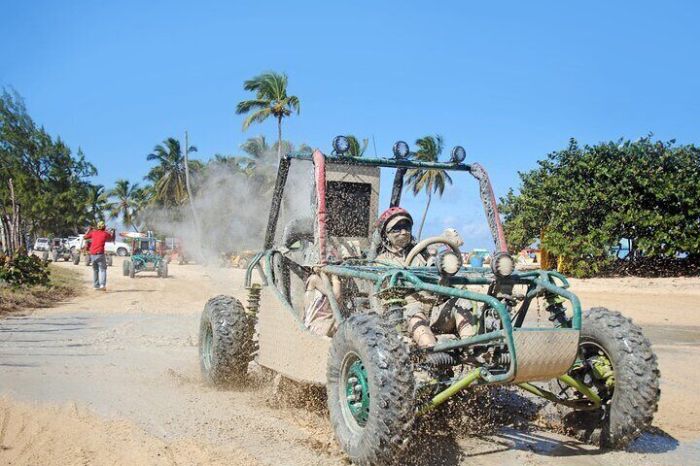
Source: expedia.com
A successful eco-buggy adventure hinges on offering enriching experiences that respect the environment and local communities. This section details a range of activities that can be integrated into a buggy tour, emphasizing educational opportunities and responsible interaction with wildlife. Furthermore, it highlights the positive impact such tours can have on local economies.
A key aspect of an eco-buggy tour is its ability to educate and inspire. By incorporating engaging activities and interactive experiences, the tour can foster a deeper appreciation for the destination’s ecology and culture. These experiences should go beyond simple sightseeing, providing opportunities for meaningful engagement and understanding.
Eco-Friendly Activities for Buggy Adventures
Integrating various eco-friendly activities enhances the visitor experience and minimizes the tour’s environmental footprint. These activities should prioritize sustainable practices and local involvement. For example, a tour could include a visit to a local organic farm, a workshop on traditional crafts, or a guided nature walk led by local experts.
- Educational Workshops: Partnering with local communities and organizations offers valuable educational opportunities. Workshops on traditional crafts, local plant identification, or sustainable agriculture can provide insights into the region’s unique culture and practices. Examples could include a pottery workshop in a rural village or a demonstration of sustainable farming techniques.
- Nature Walks: Guided nature walks, led by local naturalists, offer insights into the region’s flora and fauna. These walks should focus on responsible wildlife viewing and interaction, emphasizing the importance of minimizing disturbance to the local ecosystem. Participants can learn about the various species found in the area and their ecological roles.
- Community Interactions: Including visits to local villages or markets allows for cultural exchange and understanding. This fosters respect for local customs and traditions. For instance, a visit to a local market could include a demonstration of traditional cooking methods, or a storytelling session highlighting the region’s history.
- Wildlife Viewing: Responsible wildlife viewing is paramount. Strict guidelines regarding distance, noise levels, and photography practices should be implemented to avoid disturbing the animals. Using binoculars and high-quality cameras allows for detailed observation without disrupting the wildlife’s natural behaviors. Experienced guides can also point out the unique characteristics of the local species.
Responsible Wildlife Viewing and Interaction
Responsible wildlife viewing is crucial for the preservation of ecosystems. Approaches should be developed to ensure minimal disturbance to the local wildlife population. Respect for animals’ space and natural behaviors is essential for maintaining the balance of the ecosystem.
- Maintaining Distance: Maintaining a safe distance from animals is critical to prevent stress and disturbance. Specific guidelines for different animal species should be communicated to visitors, emphasizing the importance of respecting their natural behaviors. For instance, keeping a 100-meter distance from a herd of grazing deer will reduce the likelihood of causing stress or altering their natural patterns.
- Minimizing Noise: Loud noises can startle and disrupt animals. Encouraging visitors to maintain a quiet demeanor and minimizing vehicle noise during wildlife viewing activities can help ensure a positive experience for both the animals and the visitors.
- Photography Practices: Photography should be conducted responsibly. Flash photography and close-up shots can be detrimental to animals. Guides can educate visitors about proper photography techniques to minimize disturbance to wildlife and allow them to observe in their natural habitat.
Impact on Local Communities and Economies
Buggy tours can have a significant positive impact on local communities and economies. This can be achieved by supporting local businesses and employment opportunities. Partnerships with local communities ensure a fair and equitable distribution of benefits.
- Support for Local Businesses: Prioritizing local guides, accommodations, and restaurants can support local economies. By promoting local businesses, the tour contributes to the livelihoods of the local population.
- Job Creation: Buggy tours can create employment opportunities for local people. Hiring local guides, drivers, and support staff can create a positive impact on the local community.
- Fair Compensation: Implementing fair compensation models for local guides and businesses is vital. This ensures that local communities benefit directly from the eco-tourism activities. Transparent pricing models that reflect the true value of local goods and services are crucial.
Safety and Regulations
Eco-buggy tours, while offering exciting experiences, require stringent safety protocols. Adherence to these protocols ensures a positive and risk-free adventure for all participants. This section details crucial safety measures, regulations, emergency preparedness, and potential risks associated with these tours.
Safety Measures for Eco-Buggy Tours
Safe operation of eco-buggy tours necessitates the implementation of various safety measures. These measures are paramount in minimizing potential risks and ensuring the well-being of all participants. Participants must be briefed on the following:
- Vehicle Familiarization: Participants receive comprehensive training on the operation and limitations of the eco-buggy, including proper seating, handling, and emergency procedures. This training includes recognizing the vehicle’s capabilities and limitations in various terrains and conditions.
- Appropriate Gear: Participants are required to wear appropriate safety gear, such as helmets, sturdy shoes, and protective clothing, designed for the specific conditions of the tour. This is crucial in preventing injuries from impacts and falls.
- Weather Considerations: Participants are informed about weather conditions and their impact on safety, such as visibility, terrain traction, and potential hazards like rain or extreme temperatures. This is crucial for adapting to changing weather conditions.
- Group Supervision: Qualified and experienced guides or drivers oversee all tour activities, ensuring participant safety and providing real-time support and instructions.
Safety Regulations in Responsible Tourism
Safety regulations are fundamental to responsible tourism. They are designed to protect both the environment and the participants. Effective regulations ensure responsible tourism practices and minimize environmental impact.
- Environmental Impact Assessments: Tour operators must conduct environmental impact assessments to minimize their impact on fragile ecosystems and wildlife. This helps maintain the natural beauty and integrity of the area.
- Local Regulations Compliance: Operators must adhere to all local laws and regulations regarding permits, environmental protection, and visitor conduct. Compliance is crucial for maintaining positive relationships with local communities and authorities.
- Sustainable Practices: Operators must incorporate sustainable practices into their operations, such as reducing waste, minimizing fuel consumption, and utilizing eco-friendly equipment. This demonstrates a commitment to responsible tourism.
Emergency Preparedness and Response
Comprehensive emergency preparedness and response plans are essential for managing unforeseen circumstances during eco-buggy tours. These plans are crucial for ensuring the safety and well-being of participants.
- Emergency Contact Information: Tour operators must provide clear emergency contact information to all participants, including local emergency services numbers and the tour guide’s contact details.
- First-Aid Kits: Each tour vehicle must carry a well-stocked first-aid kit to address minor injuries. This kit must contain essential supplies for the immediate treatment of injuries.
- Communication Systems: Reliable communication systems, such as walkie-talkies or satellite phones, are crucial for coordinating responses in case of emergencies.
Potential Risks and Mitigation Strategies
Several risks are inherent in buggy adventures. Careful planning and mitigation strategies can significantly reduce these risks.
- Terrain Hazards: Uneven terrain, rocks, and loose surfaces can cause accidents. Careful route selection, vehicle maintenance, and driver training mitigate these risks. This is particularly important in areas with steep inclines or narrow passages.
- Weather Events: Sudden changes in weather, like rain or fog, can impair visibility and increase the risk of accidents. Weather forecasts, flexible schedules, and appropriate safety gear are crucial.
- Mechanical Failures: Vehicle malfunctions can be dangerous. Regular maintenance checks and spare parts are essential for minimizing mechanical failures and ensuring quick repairs if needed.
Safety Checklist for Eco-Buggy Tours
This checklist provides a framework for ensuring the safety and well-being of participants.
| Item | Action |
|---|---|
| Vehicle Inspection | Ensure the vehicle is in excellent working condition before each tour. |
| Safety Gear Check | Verify that all participants have the necessary safety gear. |
| Emergency Procedures Briefing | Brief participants on emergency procedures, including evacuation routes. |
| Weather Conditions Assessment | Evaluate current and predicted weather conditions. |
| Participant Communication | Ensure clear communication with participants throughout the tour. |
Marketing and Promotion: Wild Buggy Eco Adventure
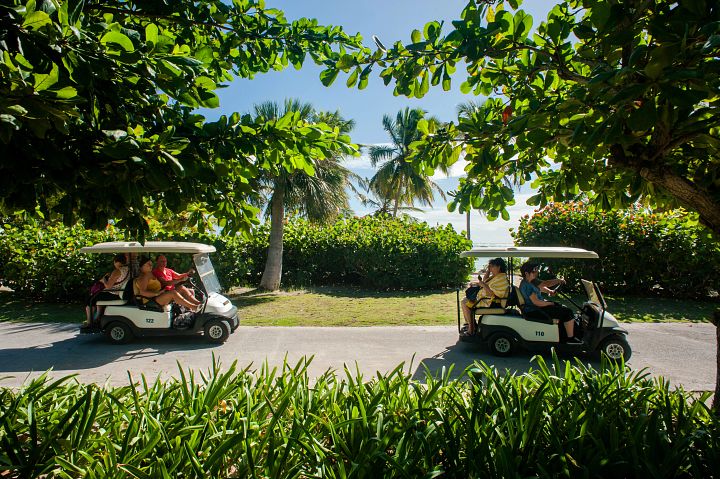
Attracting eco-conscious tourists requires a tailored marketing approach that highlights the unique value proposition of eco-friendly buggy tours. Effective campaigns must resonate with the target audience’s desire for sustainable experiences while showcasing the tour’s commitment to environmental responsibility.
Promoting these tours demands a strategic blend of online and offline channels, focusing on compelling visuals and storytelling that capture the essence of the adventure. Key elements in the marketing strategy should emphasize the ecological benefits and unique experiences offered.
Target Audience Segmentation
Understanding the target audience is crucial for crafting effective marketing campaigns. Eco-conscious travelers, adventure seekers, and families are prime candidates for these tours. Segmenting the audience allows for personalized messaging and tailored marketing materials that speak directly to their interests. Detailed market research will identify the specific needs and preferences of each segment, which is crucial for successful campaigns.
Effective Marketing Campaigns
A comprehensive marketing strategy should encompass various channels. Social media platforms like Instagram and Facebook can effectively showcase stunning visuals of the buggy tours, destinations, and activities. Collaborations with travel influencers and bloggers can significantly expand the reach and credibility of the campaigns. Targeted advertising on travel-related websites and apps can also be instrumental in reaching the desired demographic.
Showcasing Eco-Credentials
Highlighting the eco-friendly aspects of the buggy tours is paramount. Emphasize the use of sustainable materials, fuel-efficient buggies, and responsible waste management practices. Quantifiable data, such as carbon footprint reduction or partnerships with environmental organizations, can bolster the eco-credentials and build trust with the target audience. For instance, a clear statement about the use of electric or hybrid buggies can resonate strongly with eco-conscious travelers.
Highlighting Unique Experiences and Activities
Promoting the unique experiences and activities of the eco-buggy tours is key. Showcase the scenic routes, wildlife encounters, and cultural immersion opportunities. Use high-quality photography and videography to portray the beauty and adventure of the tours. Creating compelling narratives around the experiences, such as encounters with local communities, can further enhance the appeal. For example, highlighting a particular route that showcases local flora and fauna or offers unique insights into the area’s culture can make the tour stand out.
Sustainable and Eco-Conscious Marketing Campaigns
Employing sustainable practices in marketing is crucial. Use eco-friendly materials for brochures and promotional materials, and support local businesses and communities. Partner with organizations committed to environmental conservation to enhance the message and credibility. Avoid wasteful practices, such as excessive printing or unsustainable packaging. This ensures alignment with the tour’s core values. For example, using recycled paper for brochures nd incorporating elements of local art into the promotional materials,cncane effective.
Last Recap
In conclusion, wild buggy eco adventure presents a compelling vision for responsible tourism. By embracing sustainable practices, selecting eco-conscious destinations, and utilizing eco-friendly buggy designs, this adventure prioritizes both thrilling experiences and environmental preservation. The journey encompasses a comprehensive approach to planning, executing, and promoting such an expedition. This framework provides a roadmap for travelers seeking authentic and environmentally responsible experiences.
